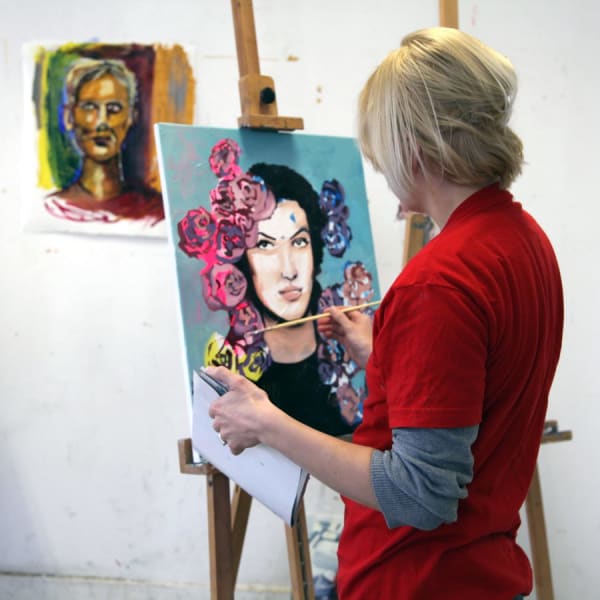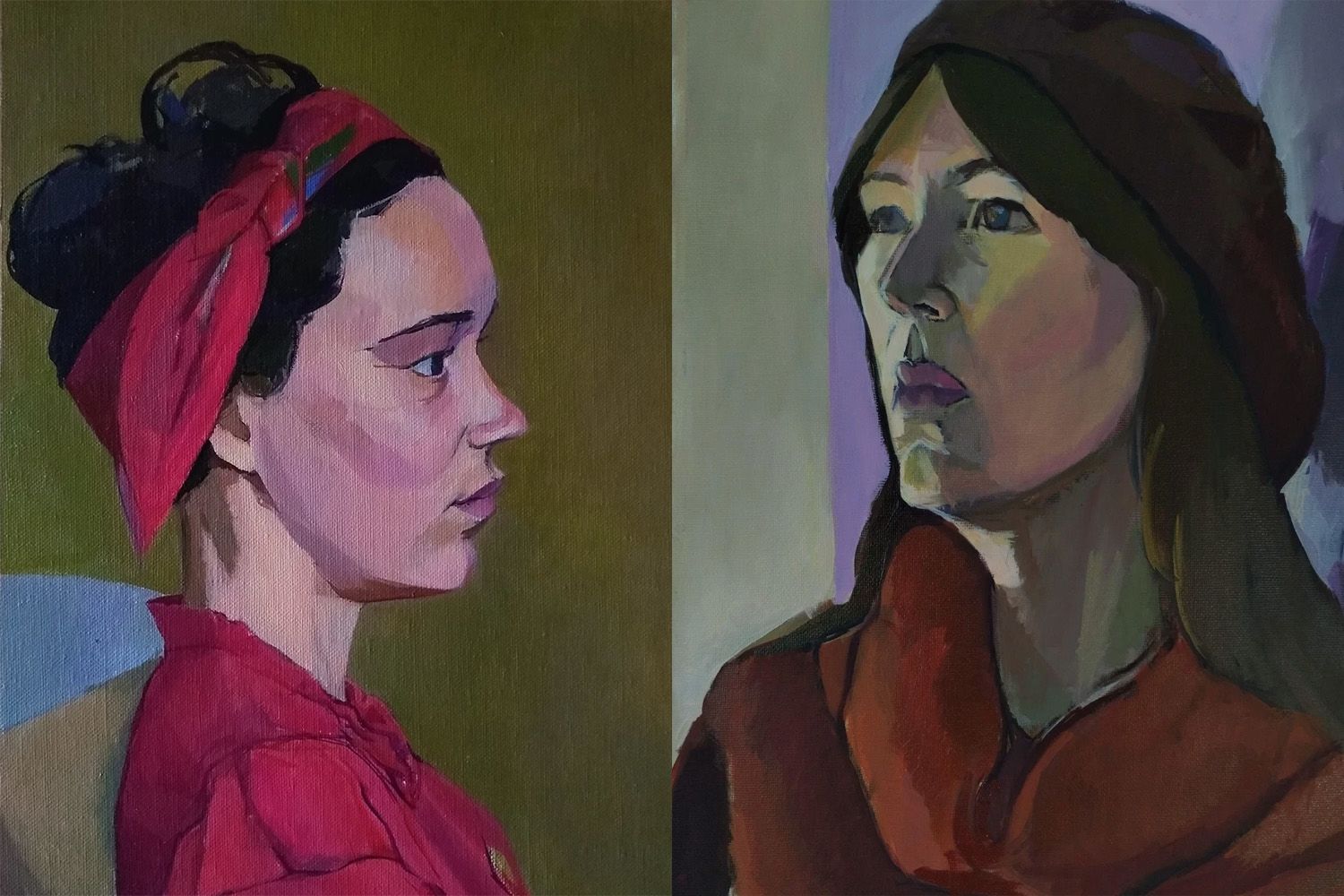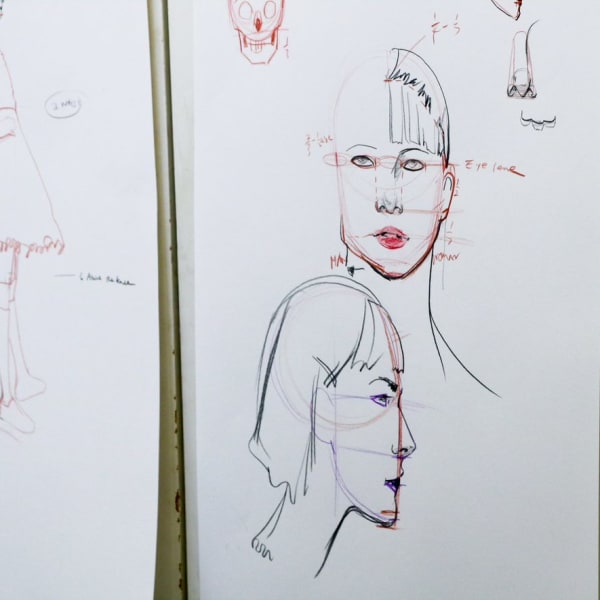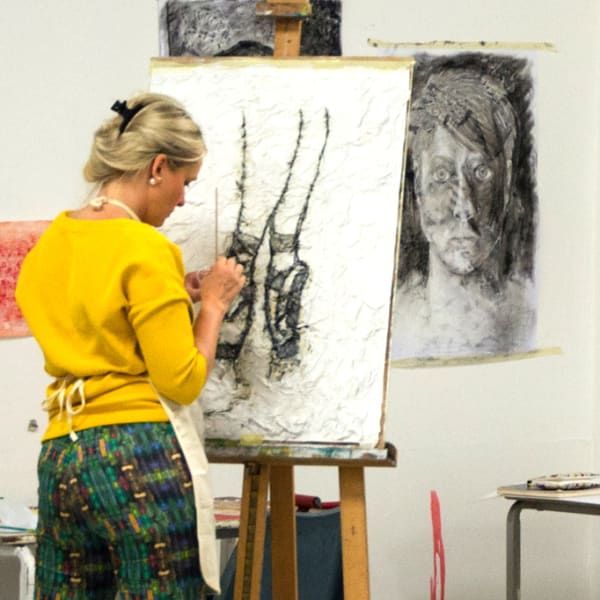
Course feature: Portrait Painting

- Written byCarys Thomas
- Published date 18 January 2024

Would you like to learn how to paint portraits?
From anatomical drawing to colour and composition, our Portrait Painting Short Course is designed to teach you everything you need to know about this exciting art form.
This week we hear from short course students, Mohona Datta and Hyuna Lee, and course tutor, Atul Vohara, to find out more about this beginner-friendly course at Chelsea College of Arts.
Want to learn more? Read our guide to 10 essential painting techniques for artists.
What is portrait painting?
One of the oldest art forms, portrait painting has an important place in the history of visual culture. Historically for the rich and powerful, portrait paintings have evolved over time and continue to be popular in contemporary society.
Typically depicting a person, animal or group, portrait paintings provide a visual representation of a subject (or ‘sitter’) and reveal something about their essence.
Whether it is expressionistic or realistic, a good portrait painting should draw the viewer in and tell a story about the subject’s life.
“Portraiture stands apart from other genres of art as it marks the intersection between portrait, biography and history. They are more than artworks; when people look at portraits, they think they are encountering that person," says Alison Smith, chief curator at the National Portrait Gallery (source: BBC Culture).
Materials and techniques
Through a combination of engaging lectures and practical sessions, students on our Portrait Painting Short Course gain an insight into oil painting materials and techniques in relation to portrait painting.
Students review examples of portrait paintings and explore key painting elements including drawing, composition, colour mixing and colour relationships, proportion, and making light and form with colour, mark and touch.
With guidance from course tutor and painter Atul, students learn to understand the structure and anatomy of the skull and begin to observe shape, form, light and contrast in relation to the head.
Atul is an expert when it comes to portrait painting. His work is held in collections nationally and internationally and he has written a book on painting which was published in 2012. Take a look at Atul's book: Painting the Human Figure: Ideas and perception.
“The course really focuses on looking; painting and perception,” says Atul. “All levels are welcome; we have a model and spend 4 sessions drawing and painting. This allows us to explore ideas about form, light, colour and composition."
Student insights
Mohona Datta came to the portrait painting short course hoping to extend her painting practice and experiment with different creative approaches.
“I’ve been painting for a while, but portrait painting was completely out of my comfort zone,” she says, “so I wanted to try something new and learn how to paint portraits.”
Mohona found the tutor guidance she received useful and enjoyed getting to know the other students in the group.
“It’s been amazing,” Mohona tells us, “we made a lot of progress as a group and it’s been lots of fun. The direction has been really useful. It’s good to not get too attached and really let your painting evolve.”
Mohana has recently taken a series of short courses to explore what she would like to pursue as a career. “It's an opportunity to find out what I'm good at, or what I could be at, without committing to a whole degree or taking a lot of time,” she says. “It’s been really helpful to explore.”
Hyuna Lee, another student on the course, also found the experience a useful opportunity to expand her practice. Hyuna started drawing a few years ago and was looking to explore her interest in oil painting.
“The tutor is great,” she says, “he gave me lots of advice and a new perspective of portrait painting, shape and colour mixing. I’ve learnt a lot from him.”
Ready to have a go yourself? Our fine art short courses cover a wide range of disciplines from fine art, painting, drawing and sculpture to photography, printmaking and book arts.
With courses running in the daytime, evenings or weekends UAL Short Courses can fit around any busy schedule. Check out our upcoming short courses to find out what's coming up.

